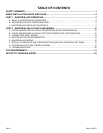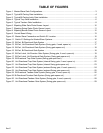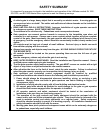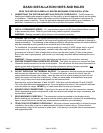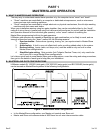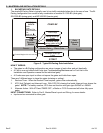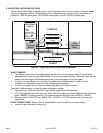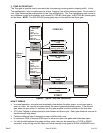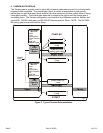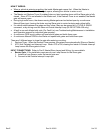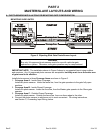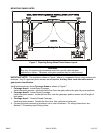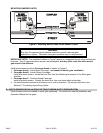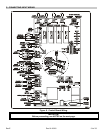
Rev E Doc 01-20201 5 of 33
2. BI-PARTING LATCH GATE DETAILS
The Bi-Parting Latch Gate is typically used in low traffic residential sites due to ease of use and added
security of magnetic locking. The Bi-Parting Latch configuration can consist of any combination of
models SL 1000-B3 (slide gate), SW 2000-B3 (swing gate), and BG 3000-B3 (barrier gate).
Figure 3. Typical Bi-Parting Latch Gate Installation.
HOW IT WORKS:
• The Master moves first during opening and the Slave first during closing, with a 2 second delay
between them to prevent gate intercollision and to ensure proper latching. When the gates are fully
closed, the outer edge of the Master gate rests on the outer edge of the Slave gate.
• A fault in one unit affects both units (see Troubleshooting/Maintenance for Fault List in the
Installation and Operation manual for the individual gate operator).
• A continuous open input in either unit opens the gates and holds them open.
There are 3 different ways to close the gates (entering or exiting):
1. Reclose Timer: When the Reclose Timer expires, gates close automatically.
2. ATG (Anti-Tailgate) and Interrupt Loop: With ATG ON, clearing the Inside Interrupt Loop closes the
gates. NOTE: For safety reasons, ATG does not function with gate type SWING or LINEAR.
3. Alternate Action: With ATG and TIMER OFF, a RADIO or CYCLE command will close the fully
open gates.
INPUT CONNECTIONS: Refer to Part 2, Master/Slave Layout and Wiring, for more details.
• Inputs can be connected to either unit.
STREET
COMPLEX
Gate
Operator
Master
Gate
Operator
Slave
Exit Loop
Inside Interrupt
Loop
Shadow Loop
Outside Interrupt
Loop
Fence
Fence
ADDITIONAL
INPUTS:
Radio
Cycle
Interrupt Bar
Photo Sensors
Fire
MagLock
Manual Inputs
1384F3
Master/Slave Cable
Connect MagLock to one unit only.




